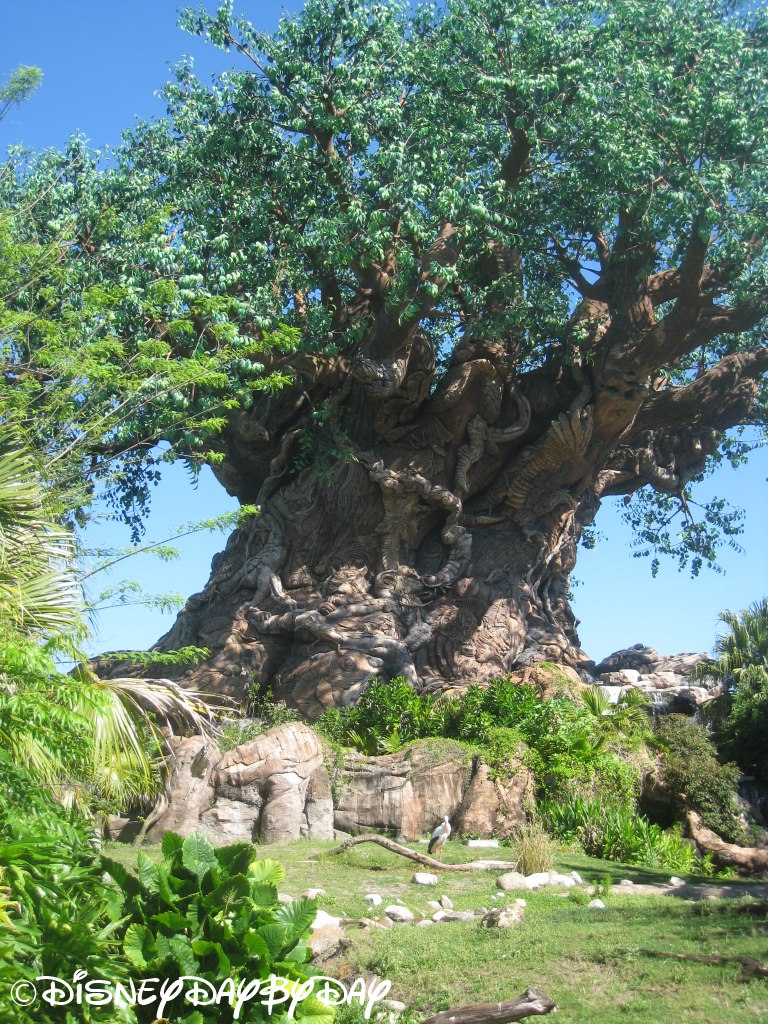
by Sean | Oct 24, 2013 | History

Have you visited Animal Kingdom? Attended the It’s tough to be a bug 4-D show? Got scared by Hopper and cried with all the other kids? OK, maybe that’s just me.

Did you know that you were in the area that was originally planned to be a restaurant called Roots Restaurant? As plans were drawn up for the Animal Kingdom the Tree of Life took on many forms. From a 50 foot tall children’s playground area to a tree that everyone could climb up onto a platform to look out over Discovery Island (originally called Safari Village).
If a restaurant is not your style, how about some oil, black gold, texas tea? Did you know the Tree of Life’s structure is made from an oil drilling platform? The tree had to be huge and withstand hurricane force winds, so what better structure. A few more facts about the tree: There are 12 main branches that break out to 45 secondary branches, to 756 tertiary branches, and finally to 7,891 end branches. Yes, lots of branches and lots of leaves, over 102 thousand. It were these end branches that started to fall from the tree in 2012. Though there have not been any more instances of branches falling, you will notice a net structure surround you as you walk among the roots of the Tree of Life. The tree is also 145 feet tall and 165 wide, and no you can’t climb it today.
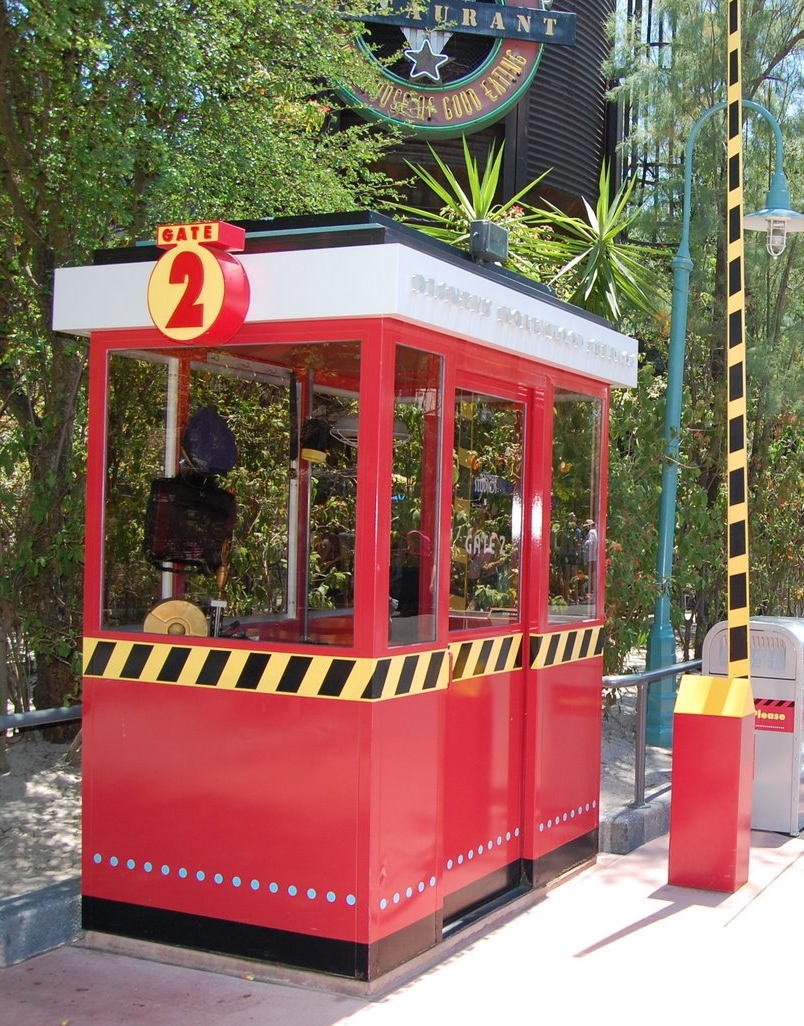
by Sean | Oct 17, 2013 | History
As you stroll around Hollywood Studios have you ever noticed that there are two major sections of this park, the front side being Fancy Dancy Hollywood and the back half as the Production areas (Back Lot)? Over time some of these distinctions have been removed, such as these security gates. As the star, these gates were never closed for you or I. Do you remember passing through them?

These gates were located throughout the park as you moved into the production or back lot areas. This one was located near the Indiana Jones attraction as you walk towards Star Tours. Even on map you can see the coloring change over to a yellowish color in the back lot areas.
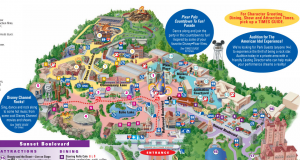
There are other things you will notice after you pass into the back lot areas:
• Fences transition from elegant painted fences to just pipes.
• Lampposts become just basic post and light
• Trash cans become gray and don’t display the “Help Keep Our City Clean” images
• Pavement transitions to just plain concrete
• Even flowers and plantings become less and is even just plain sand in certain areas
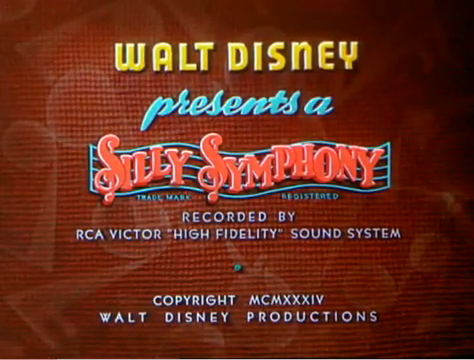
by Sean | Oct 3, 2013 | History

A recent trip to California Adventure (don’t miss our giveaway, click here) and a ride on the Silly Symphony Swings brought back my memories of these great cartoons. I remembered a few of them, but how many were made?
The Silly Symphonies were a series of animated shorts produced by Walt Disney Productions. 75 shorts were made between 1929 and 1939, or one every couple of months on average. A few of our favorite Disney Characters made their debut in these symphonies such as Donald Duck in The Wise Little Hen (1934) and our favorite pal Pluto in Just Dogs (1932)
These Symphonies were Walt’s playground to experiment with new techniques before introducing them into the much more labor intensive movies. Today the complete collection can be owned in a DVD series “Silly Symphonies” and “More Silly Symphonies”. What is your favorite Symphony?
Ride the Silly Symphony Swings with us :
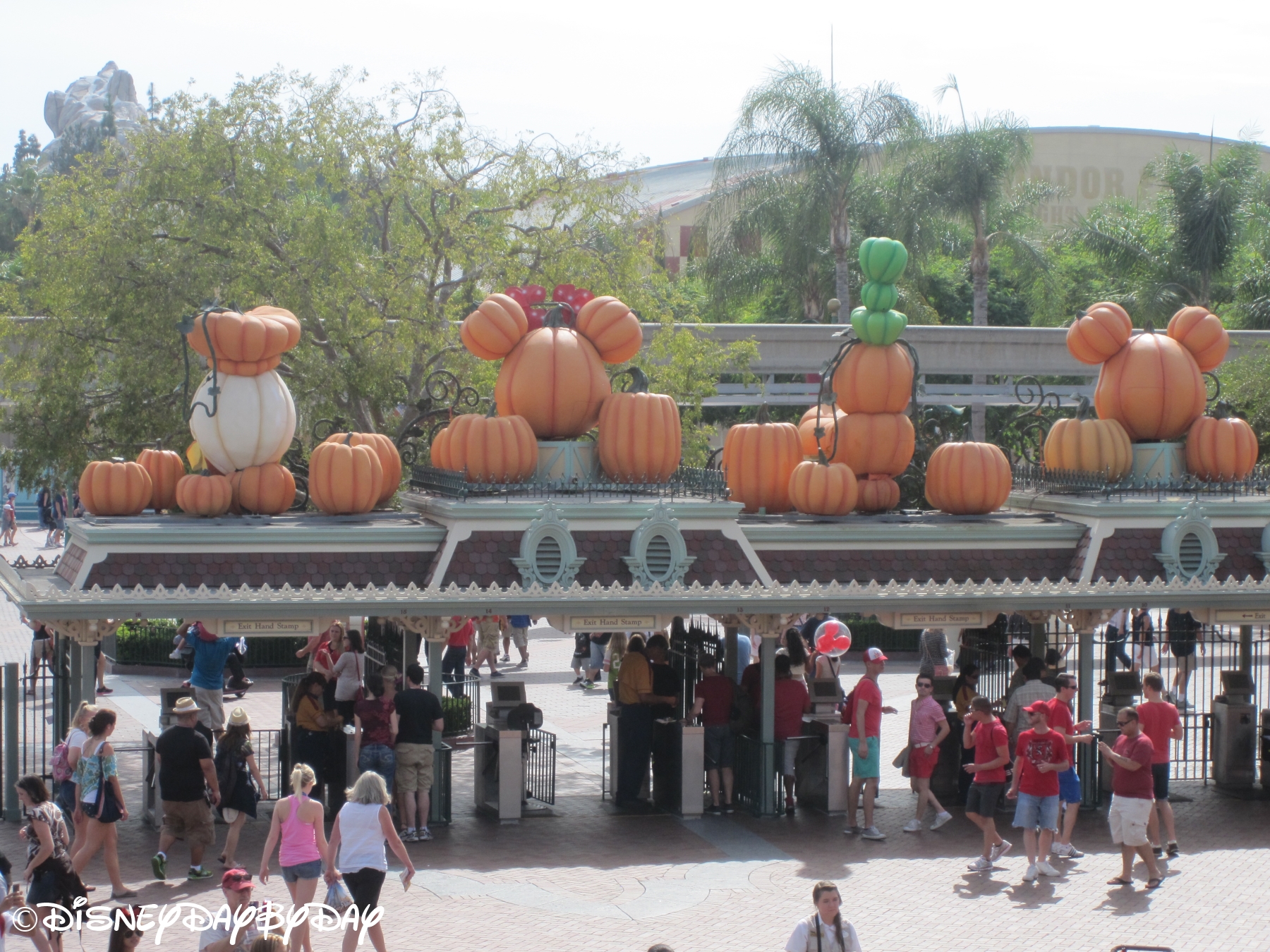
by Sean | Sep 12, 2013 | History
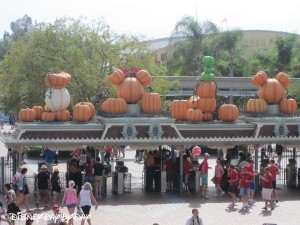 Next week at this time the DisneyDayByDay family will be deep in our exploration of Disneyland. As part of our research on things to do and where to eat, I was interested in riding all the Disneyland classics that were open on day 1 and still open in their “original” condition today. I was surprised to find over a dozen that I have listed below.
Next week at this time the DisneyDayByDay family will be deep in our exploration of Disneyland. As part of our research on things to do and where to eat, I was interested in riding all the Disneyland classics that were open on day 1 and still open in their “original” condition today. I was surprised to find over a dozen that I have listed below.
- Autopia
- Casey Jr (was not working on day 1, but was supposed to be open)
- Disneyland Railroad
- Disneyland Street Railway ( horse drawn trolleys on Main Street USA)
- Dumbo
- Explorer’s Boat Ride (Jungle Cruise)
- King Arthur Carousel
- Mad Tea Party
- Mark Twain River Boat
- Mr. Toad’s Wild Ride
- Peter Pan’s Flight
- Snow White’s Scary Adventures
- Canal Boats of the World (Late in 1955, now Storybook Land Canal Boats)
We can’t wait to set foot on the same ground that Walt walked on and wave to him as we pass the Firehouse. Disneyland opened to the public on July 17th, 1955 to a crowd of over 28,000. Amazing to see the smile on Walt’s face as he comes in on the train on dedication day.

by Sean | Aug 28, 2013 | Blog Hops, History
 Many of you probably remember being able to get your McDonalds fix within Disney Parks. Even as recent as the construction of Animal Kingdom where McDonalds sponsored Dinoland including the Dinosaur attraction and Restaurantosaurus. Where I could get my happy meal. Today you will still find McDonalds on Walt Disney World Property, but where did relationship come from, how did they get into the parks, and where did they go? Hmmmm
Many of you probably remember being able to get your McDonalds fix within Disney Parks. Even as recent as the construction of Animal Kingdom where McDonalds sponsored Dinoland including the Dinosaur attraction and Restaurantosaurus. Where I could get my happy meal. Today you will still find McDonalds on Walt Disney World Property, but where did relationship come from, how did they get into the parks, and where did they go? Hmmmm
The relationship between Disney and McDonalds goes all the way back to when Walt Disney met Ray Kroc (McDonalds Founder) during World War 1 where they were both part of the Red Cross. Ray Kroc wrote about Walt in his autobiography, “He was regarded as a strange duck, because whenever we had time off and went out on the town to chase girls, he stayed in the camp drawing pictures.”
In 1954, Walt received a letter from Ray Kroc which stated “Dear Walt, I feel somewhat presumptuous addressing you in this way yet I feel sure you would not want me to address you any other way. My name is Ray A. Kroc….I look over the Company A picture we had taken at Sound Beach, Conn., many times and recall a lot of pleasant memories…I have very recently taken over the national franchise of the McDonald’s system. I would like to inquire if there may be an opportunity for a McDonald’s in your Disneyland Development.”
Walt forwarded the letter onto the Vice President in charge of concessions at the parks, but Kroc never received a response from the VP. However decades later McDonalds found its way into the parks and into our stomachs. All was well until the 1980’s, disagreements between Disney and McDonalds began around the quality of the promotional offerings that McDonalds was creating. Burger King and other fast food companies jumped at the chance to get involved with Disney. In 1996, McDonalds was able to negotiate an exclusive deal once again to the tune of $100 million dollars for 10 years. This agreement supposedly netted McDonalds over $1 billion dollars, just a tad bit more than what they paid Disney.
When 2006 rolled around and the contract was up for renewal, using the numbers from above, you can guess why Disney decided not to renew this contract. Many speculated that the reason was because Disney was moving in a healthier direction. Both companies ended up releasing statements that it was a mutual decision to end the contract. With the ending of the contract Disney converted many of the locations. Even though it’s not the same as a Happy Meal toy, you do get a beach bucket and shovel with your kids meal at Restaurantosaurus.
by Sean | Aug 22, 2013 | History, Hollywood Studios
We will always call it MGM Studios….

For those of you new to the Disney World Family you know this park as Hollywood Studios, but to us it will always be MGM Studios.
Where did MGM Studios come from? In the 80’s two Imagineers, Marty Sklar and Randy Bright were working on the plans for two new pavilions for Epcot’s Future World. As their ideas unfolded they came up with what would later become the Wonders of Life and Great Movie Ride pavilions. As they presented these to Michael Eisner he indicated that it would be better to wrap the Great Movie Ride around an entire park themed with entertainment and show business.
In 1985, Disney and Metro Goldwyn Mayer entered into the licensing contract which gave Disney the rights to use the name MGM. Three years later in 1988 MGM filed the first lawsuit stating that Disney violated the contract by operating a working movie and television studio on the property. The MGM Studios theme park opened on May 1st, 1989 keeping the name which allowed the logo use and items to be displayed in the Great Movie Ride attraction.
Lawsuits between the companies went back and forth, in the meantime MGM opened MGM Grand Adventures Theme Park in Vegas which closed in 2000. Paying the lawyers all came to an end on August 9, 2007 as Disney announced the re-branding to Disney Hollywood Studios.
MGM Studios, Hollywood Studios, what do you call it? Comment below and let us know, be sure to visit all the other great Disney history on the hop today!














